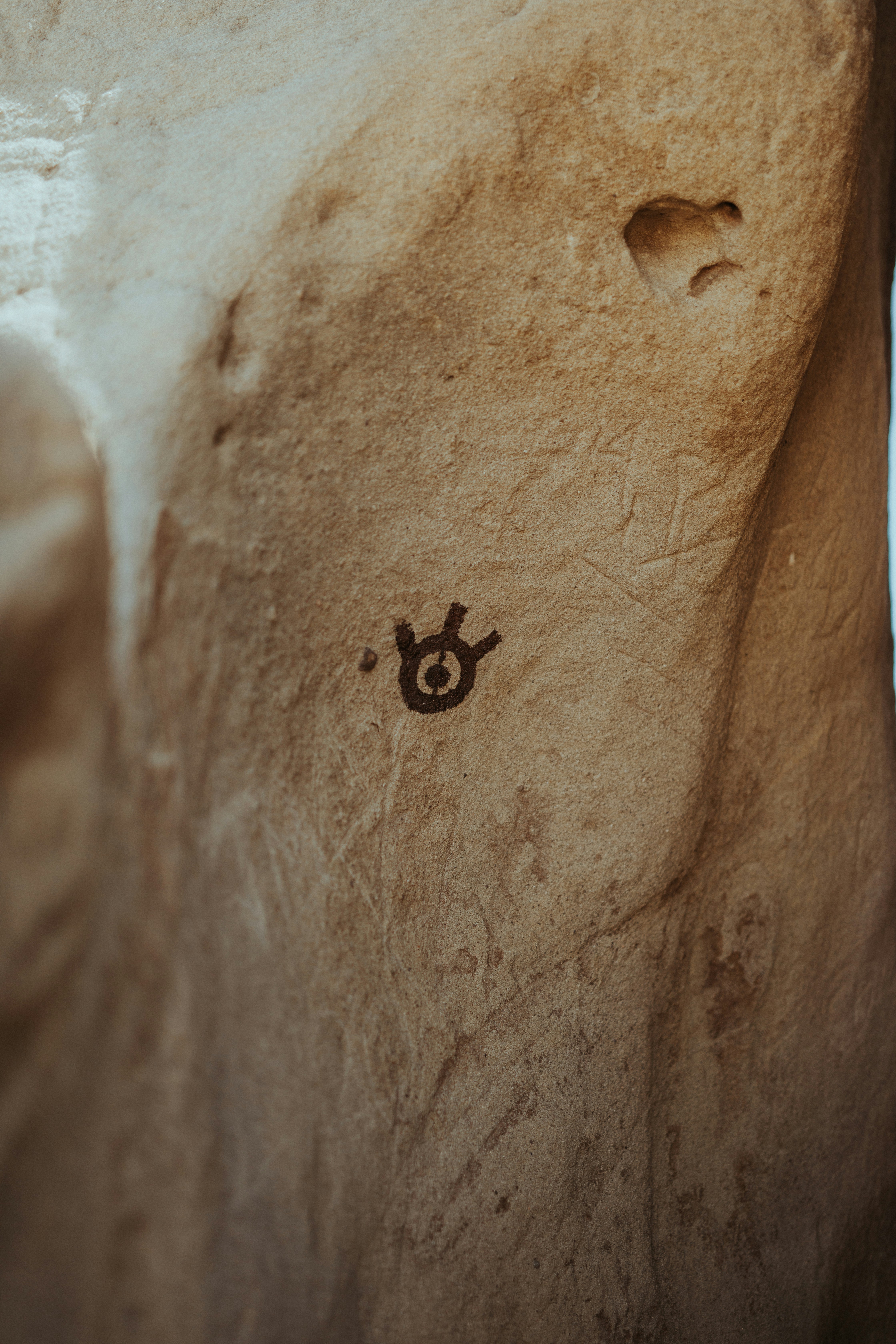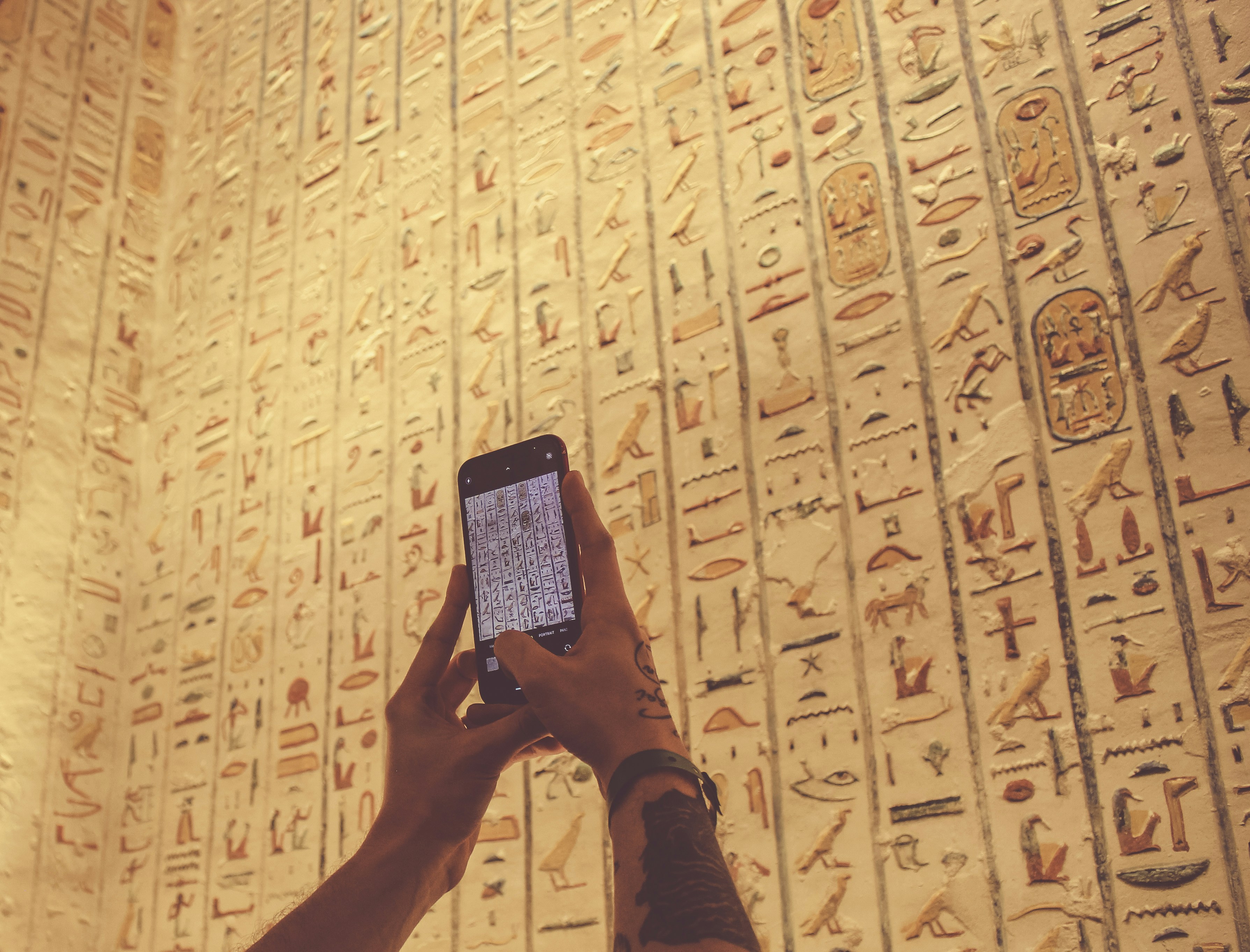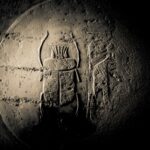Support our educational content for free when you purchase through links on our site. Learn more
The Urim and Thummim: 7 Secrets of the Ancient Divine Oracle ✨
Imagine holding in your hands a mysterious tool that ancient priests used to receive direct answers from the divine—answers that shaped the fate of nations. The Urim and Thummim, often shrouded in biblical mystery and lost to time, were exactly that: sacred instruments of revelation and judgment. But what were they really? How did they work? And why do they still captivate scholars, theologians, and curious minds alike?
In this deep dive, we at History Hidden™ unravel 7 fascinating secrets about the Urim and Thummim—from their enigmatic origins and debated meanings to their surprising revival in the Latter-day Saint tradition. Along the way, you’ll discover how these ancient stones inspired everything from biblical decisions to modern pop culture, and why their legacy still matters today. Stick around for a surprising connection to a beloved modern novel and tips on how the ancient quest for clarity can inspire your own decision-making!
Key Takeaways
- The Urim and Thummim were sacred objects used by Israelite High Priests to seek divine guidance, often through binary yes/no answers.
- Their name likely means “Lights and Perfections,” symbolizing divine truth, though some scholars debate alternative meanings.
- Housed within the Breastplate of Judgment, their exact form and function remain a mystery, with theories ranging from casting lots to divine illumination.
- Their use faded after the Babylonian exile but was revived in the 19th century by Joseph Smith as instruments for translating the Book of Mormon.
- Parallels exist worldwide with other ancient divination tools, highlighting humanity’s universal search for guidance.
- Modern culture continues to reference the Urim and Thummim, including Paulo Coelho’s The Alchemist and university mottos like Yale’s.
- You can explore related artifacts and books on biblical archaeology and ancient divination through trusted retailers.
👉 Shop related products:
- Ancient Divination Tools & Replicas: Amazon | Etsy
- Books on Biblical Archaeology & History: Amazon
- Joseph Smith’s Seer Stones & Interpreters: Amazon | Walmart
Table of Contents
- ⚡️ Quick Tips and Facts
- 📜 Unveiling the Enigma: The Ancient History of the Urim and Thummim
- 🤔 What’s in a Name? Deciphering the Meaning of Urim and Thummim
- 🔍 Divine Instruments: Exploring the Form and Function of the Urim and Thummim
- 📖 From Exodus to Exile: A Chronology of Urim and Thummim in Biblical Narratives
- ✨ A New Dispensation? The Urim and Thummim in the Latter-day Saint Tradition
- 🌍 Global Echoes: Parallels and Interpretations of Sacred Divination Tools
- 🧐 Scholarly Scrutiny: Academic Theories and Debates Surrounding the Urim and Thummim
- 💡 Modern Musings: Lessons from the Urim and Thummim for Today’s Seekers
- 🎬 From Sacred Texts to Silver Screens: The Urim and Thummim in Pop Culture
- ✅ Conclusion: Unraveling the Mystery, Embracing the Legacy
- 🔗 Recommended Links: Dive Deeper into Ancient Wisdom
- ❓ FAQ: Your Burning Questions About the Urim and Thummim Answered
- 📚 Reference Links: Our Sources for Historical Accuracy
Here is the main body content for your article on The Urim and Thummim.
⚡️ Quick Tips and Facts
Welcome, history adventurer! Before we journey back in time, here’s a quick cheat sheet on the Urim and Thummim. We at History Hidden™ have spent countless hours poring over ancient texts, and this is the stuff you need to know right now!
- What Were They? The Urim and Thummim were sacred objects used by the High Priest of ancient Israel to discern God’s will. Think of them as a divine hotline, but way more mysterious.
- Where Were They Kept? They were placed inside the Hoshen, or the Breastplate of Judgment, a lavishly decorated pouch worn over the High Priest’s chest.
- What Does the Name Mean? The exact meaning is debated, but a popular translation is “Lights and Perfections” (אוּרִים וְתֻמִּים). Some scholars, however, suggest it could mean “Cursed or Faultless,” pointing to their use in determining guilt.
- How Did They Work? Nobody knows for sure! Theories range from casting them like lots to divine illumination of letters on the breastplate. Most scholars agree they provided simple, often “yes” or “no” answers.
- Key Biblical Mentions: You’ll find them in passages like Exodus 28:30, where God commands their creation, and 1 Samuel 14:41, where King Saul uses them to find a culprit.
- When Did They Disappear? Their use faded after the time of King David and they are believed to have been lost by the time of the Babylonian Exile (around 587 BCE).
- Modern Connection: The term was famously adopted by Joseph Smith, the founder of the Latter Day Saint movement, to describe a set of “interpreters” he said he used to translate the Book of Mormon.
📜 Unveiling the Enigma: The Ancient History of the Urim and Thummim

Alright, let’s pull back the velvet rope and step into one of history’s most fascinating green rooms. The story of the Urim and Thummim is one of the great bible mysteries that has captivated theologians, treasure hunters, and historians (like us!) for centuries. These weren’t just pretty stones; they were considered a direct interface with the divine, a sacred technology for making life-or-death decisions for an entire nation.
Imagine this: you’re the High Priest of Israel. The weight of your people’s future rests on your shoulders. A plague is ravaging the land, or a rival army is massing at your borders. What do you do? You don’t convene a committee. You don the sacred vestments, approach the Holy of Holies, and consult the Urim and Thummim.
Their origin is tied directly to the instructions God gives Moses on Mount Sinai for establishing the priesthood. As the Jewish Encyclopedia notes, they were a fundamental part of the High Priest’s regalia, as essential as the ephod or the incense. Their purpose was clear: to bridge the gap between the human and the divine, providing clarity when the path forward was shrouded in fog. But what were they, really? And how did they function? That, my friend, is where the real mystery begins.
🤔 What’s in a Name? Deciphering the Meaning of Urim and Thummim
Words have power, and in the ancient world, names held the very essence of a thing. So, what’s the deal with “Urim and Thummim”? Let’s get our linguistic magnifying glasses out.
- Urim (אוּרִים): The most common interpretation connects this to the Hebrew root for “light” or “to shine.” This suggests a process of illumination or revelation. Picture the High Priest receiving a flash of divine insight.
- Thummim (תֻּמִּים): This word is widely linked to the root for “perfection,” “completeness,” or “truth.” It implies that the answer received was whole, true, and without fault.
Put them together, and you get “Lights and Perfections,” a beautifully poetic name for a divine oracle. It paints a picture of God’s perfect truth being illuminated for the priest.
However, we historians love a good debate! Some scholars propose a more… dramatic interpretation. As noted on Wikipedia, an alternative theory suggests Urim could derive from Arrim (אּרּרִים), meaning “curses.” This would make the pair mean “Cursed or Faultless.” This shifts their function from general guidance to a specific tool for judgment—a divine coin toss to determine guilt or innocence. Was it a source of brilliant light or a stark verdict of doom? The ambiguity is part of its enduring allure.
🔍 Divine Instruments: Exploring the Form and Function of the Urim and Thummim
So, we know their name and their purpose, but what did they look like? If you’re picturing something from an Indiana Jones movie, you might not be far off, but the Bible is frustratingly silent on the details. It tells us where they were, but not what they were.
The Breastplate of Judgment: A Sacred Connection
The Urim and Thummim weren’t standalone gadgets. They were part of a larger ensemble: the Breastplate of Judgment (Hoshen ha’Mishpat). This was no simple accessory. It was an intricate square pouch, woven from gold, blue, purple, and scarlet threads, and set with 12 precious stones, each engraved with the name of one of the 12 tribes of Israel.
Exodus 28:30 commands: “Also put the Urim and the Thummim in the breastpiece, so they may be over Aaron’s heart whenever he enters the presence of the LORD.”
They were literally kept close to the High Priest’s heart, symbolizing the immense gravity of the judgments he made. The breastplate itself was a symbol of the unity of the twelve tribes, and the Urim and Thummim within it were the tools to seek guidance for them all.
How Did They Work? Mechanisms of Divine Revelation
This is the million-drachma question! Since the Bible doesn’t provide a user manual, we’re left with theories pieced together from scriptural clues and later traditions.
| Theory of Operation | Description | Our Take (History Hidden™) |
|---|---|---|
| Sacred Lots (Cleromancy) | The most widely accepted scholarly view. The Urim and Thummim were two distinct objects (perhaps stones or tablets), one representing “yes” (or “innocent”) and the other “no” (or “guilty”). The priest would reach into the pouch and draw one out. | ✅ Highly Likely. This aligns with the binary “yes/no” nature of the questions asked in the Bible (e.g., “Shall I go up against the Philistines?”). It’s a practical and ancient form of divination. |
| Divine Illumination | A more mystical interpretation, popular in Rabbinic tradition. The stones on the breastplate itself would light up in a sequence to spell out an answer. | 🤔 Intriguing, but less evidence. This theory is visually spectacular but lacks direct biblical support. It seems to have developed later to explain how more complex answers could be given. |
| Direct Prophetic Vision | The objects themselves were merely a focal point. The High Priest would enter a trance-like state and receive a direct mental vision or message from God. | 🧐 Possible, but blurs lines. This makes the Urim and Thummim more of a catalyst for prophecy than an oracle in their own right. It overlaps with the role of prophets, who became more prominent as the use of the Urim and Thummim waned. |
Dr. Doug Bookman, in a fascinating discussion on the OnScript podcast, argues that the Urim and Thummim should be seen as a singular entity, distinct from the “sacred lot.” This perspective challenges the common two-stone theory and suggests a more unique, unified mechanism. What if it wasn’t a choice between two objects, but a single object that changed somehow? The debate rages on!
📖 From Exodus to Exile: A Chronology of Urim and Thummim in Biblical Narratives
The Urim and Thummim weren’t just a theoretical concept; they were put to work in some of the Old Testament’s most pivotal moments. Their story arc, however, is one of a powerful beginning followed by a mysterious fade into silence.
Key Biblical Accounts: When God Spoke Through Stones
- The Achan Incident (Joshua 7): After a demoralizing defeat at Ai, Joshua seeks to find the sinner in the camp who has violated God’s command. Through a process of elimination that strongly implies casting lots (likely involving the Urim and Thummim), the culprit, Achan, is identified.
- Saul’s Rash Vow (1 Samuel 14): King Saul needs to know why God is silent before a battle. He uses the oracle to determine if the fault lies with him and his son Jonathan, or with the rest of the army. The lot falls on Saul and Jonathan, revealing Jonathan’s unwitting transgression.
- David’s Rise to Power (1 Samuel 23): While on the run from Saul, David repeatedly consults God through the High Priest’s ephod (which contained the Urim and Thummim). He asks specific, strategic questions: “Will the citizens of Keilah surrender me to Saul?” and “Will Saul come down?” He receives clear “yes” answers and acts accordingly, saving his own life.
The Silence of the Oracle: Why Their Use Faded
After King David, explicit mentions of the Urim and Thummim being used vanish from the biblical record. Why did this divine communication channel go silent?
- ❌ The Rise of Prophecy: The age of David and Solomon gave way to the age of the great prophets like Elijah, Isaiah, and Jeremiah. God began speaking through charismatic individuals with detailed, eloquent messages, making a simple yes/no oracle seem… outdated.
- ❌ Loss of the Ark and Temple: The spiritual heart of Israel was the Ark of the Covenant in the Temple of Solomon. When the Babylonians sacked Jerusalem in 587 BCE and destroyed the Temple, the sacred objects, including the Urim and Thummim, were likely lost or destroyed forever.
- ❌ Spiritual Decline: Some rabbinic sources suggest that the Urim and Thummim only functioned when the High Priest and the people were in a state of sufficient spiritual purity. As the kingdom declined, perhaps the connection simply… fizzled out.
By the time the Jews returned from exile, the memory remained, but the objects were gone. The book of Ezra (2:63) mentions that a governor decreed that certain priests could not eat the most holy food “until there should be a priest to consult the Urim and Thummim”—a clear admission that they no longer possessed them. The hotline was disconnected.
✨ A New Dispensation? The Urim and Thummim in the Latter-day Saint Tradition
Fast forward nearly 2,500 years. The Urim and Thummim, long considered relics of a bygone biblical era, make a stunning reappearance in a new context: the founding of The Church of Jesus Christ of Latter-day Saints. This is a significant and often misunderstood part of their story.
Joseph Smith’s Vision: Translating Ancient Records
In the 1820s, a young man named Joseph Smith claimed to have been led by an angel to a set of buried golden plates. With these plates, he said he found what he later termed the Urim and Thummim. He described them as a pair of seer stones set in a silver bow, like spectacles, which he called “interpreters.”
According to Latter-day Saint belief, these were the very instruments used by seers in ancient times. Smith stated that by looking through them, he was able to translate the “reformed Egyptian” characters on the golden plates into English, producing the Book of Mormon. For members of the faith, this wasn’t just a revival of an ancient term; it was the literal restoration of a divine tool for revelation.
The Interpreters and the Seer Stone: Are They the Same?
Here’s where it gets complex. Historical accounts from the period, including from Smith’s wife Emma, indicate that he used two different instruments for translation:
- The “Interpreters”: The two stones in a silver bow found with the plates. This is what is most directly identified as the Urim and Thummim.
- A Seer Stone: A single, separate stone, often chocolate-colored and egg-shaped, that Smith had found years earlier in a well. He would often place this stone in a hat to block out the light and then read the translated text.
While early on a distinction was made, over time, Joseph Smith and other church leaders began to use the term “Urim and Thummim” to refer to both the interpreters and the single seer stone, and even more broadly to any instrument used to receive divine revelation. The Church’s official website clarifies this expanded definition, stating that the white stone mentioned in the Book of Revelation could also be considered a Urim and Thummim.
This re-contextualization is a key point of divergence. For most of Judaism and Christianity, the Urim and Thummim are historical artifacts lost to time. For Latter-day Saints, they are a restored reality and a symbol of continuing revelation.
🌍 Global Echoes: Parallels and Interpretations of Sacred Divination Tools
While the Urim and Thummim are unique to the Israelite tradition, the human desire to peek behind the cosmic curtain is universal. Looking at other cultures helps us understand that the Israelites weren’t alone in seeking divine guidance through physical objects. This is a core theme in many Mythology Stories.
- Ancient Mesopotamia: The Tablet of Destinies (Tuppi Šīmāti) was a clay tablet said to bestow supreme authority upon its divine possessor. The god who held it, like Marduk, ruled the universe. While not a Q&A device, it was a physical object that embodied divine will and legitimacy, much like the Urim and Thummim conferred divine authority on the High Priest’s decisions.
- Ancient Egypt: Priests used various methods of divination. Statues of gods were sometimes built with mechanisms that allowed them to nod or move, providing answers to petitioners. A famous example is the oracle of Amun at the Siwa Oasis, which Alexander the Great famously consulted.
- Ancient Greece: The Oracle of Delphi is perhaps the most famous parallel. The Pythia (priestess) would enter a trance and channel cryptic prophecies from the god Apollo. While the mechanism was a person rather than an object, the function—providing divine answers to crucial questions—was identical.
- Roman Religion: The Romans practiced augury, interpreting the will of the gods by studying the flight of birds, and haruspicy, inspecting the entrails of sacrificed animals. Again, different methods, same goal: reducing uncertainty through a sacred process.
These parallels don’t diminish the uniqueness of the Urim and Thummim. Rather, they place them within a broader human story—our species’ enduring quest for meaning, guidance, and a connection to something greater than ourselves.
🧐 Scholarly Scrutiny: Academic Theories and Debates Surrounding the Urim and Thummim
When we at History Hidden™ put on our academic hats, the Urim and Thummim become a fascinating case study in textual criticism, archaeology, and the history of religion. Scholars, unbound by faith, ask some tough questions.
Archaeological Evidence: What Do We Really Know?
Let’s be blunt: there is zero direct archaeological evidence for the Urim and Thummim. No one has ever dug up a set of stones from the First Temple period and credibly identified them as the biblical oracle. This isn’t surprising. They were small, likely organic or precious, and associated with a temple that was utterly destroyed 2,500 years ago.
What we do have is archaeological evidence for the widespread practice of cleromancy (casting lots) across the ancient Near East. Archaeologists have found dice-like objects, marked astragali (knucklebones), and other potential divination tools at many sites. This contextual evidence makes the “sacred lots” theory for the Urim and Thummim’s function the most plausible from a purely historical-critical perspective.
Theological Interpretations: Divine Will vs. Human Agency
The debate here is a classic. Were the Urim and Thummim a direct, miraculous intervention by God, or were they a ritualized tool that gave divine sanction to human decisions?
- The Maximalist View: God directly manipulated the objects or sent a vision. The priest was merely a passive vessel for a supernatural event. This is the traditional religious interpretation.
- The Minimalist View: The process was a form of “pious fraud” or a psychological tool. The priest, deeply immersed in the situation, would subconsciously influence the outcome, or the ritual itself would provide the confidence needed to act. The “divine” answer was really a reflection of the community’s or the leader’s best judgment, sanctified by tradition.
- The Middle Ground: This view suggests a synergy. The ritual created a focused state of mind where the priest was more receptive to divine inspiration, which was then confirmed through the physical objects. It acknowledges both human agency and the potential for genuine religious experience.
Ultimately, without a time machine, we can’t definitively prove how they were perceived by the people who used them. But the very existence of these debates shows how deeply the Urim and Thummim tap into fundamental questions about faith, authority, and the nature of God’s interaction with the world.
💡 Modern Musings: Lessons from the Urim and Thummim for Today’s Seekers
Okay, so we can’t pop down to a temple and ask a bejeweled priest whether we should take that new job or move to a new city. The Urim and Thummim are gone. So what? Why should we care about these ancient, mysterious objects today?
Because the need that created them is more alive than ever.
Seeking Guidance in a Complex World: Ancient Wisdom, Modern Application
The core function of the Urim and Thummim was to provide clarity in the face of overwhelming uncertainty. Sound familiar? We live in an age of information overload, where every decision comes with a thousand branching possibilities and endless expert opinions. The ancient Israelites’ desire for a clear “yes” or “no” is deeply relatable.
What can we learn from their approach?
- The Importance of Intentionality: Consulting the Urim and Thummim wasn’t a casual act. It was a solemn, ritualized process. It required the High Priest to be in a specific state of purity and focus. Lesson: When facing a big decision, create your own “ritual.” Turn off the noise, find a quiet space, and intentionally focus on the question at hand. Don’t try to solve life’s biggest problems while scrolling through social media.
- The Power of Simplicity: The questions posed were direct and binary. “Should we go to war?” “Is this person guilty?” They cut through the complexity to get to the core of the issue. Lesson: Sometimes, we overcomplicate things. Try to boil your dilemma down to its simplest form. What is the fundamental “yes/no” question you need to answer?
- Trusting a Process: The Israelites trusted the process God had given them. Whether you’re a person of faith who prays, someone who meditates, writes in a journal, or talks things through with a trusted mentor, the key is to have a process for seeking wisdom and then trusting it.
The Urim and Thummim may be artifacts of history, but the human search for “light and perfection”—for clarity and truth—is a timeless quest.
🎬 From Sacred Texts to Silver Screens: The Urim and Thummim in Pop Culture
Anything this mysterious and powerful is bound to escape the confines of scripture and find its way into our modern storytelling. The Urim and Thummim have become a fascinating piece of cultural shorthand for mystical guidance and ancient secrets, a prime example of how history bleeds into our Folklore and Legends.
- Paulo Coelho’s The Alchemist: This is arguably the most famous modern appearance. In the beloved novel, the old king Melchizedek gives the shepherd boy Santiago two stones, one black (meaning “yes”) and one white (meaning “no”), which he explicitly calls Urim and Thummim. They are meant to help the boy make decisions when he cannot read the omens. This interpretation directly embraces the “sacred lots” theory and has introduced the concept to millions of readers.
- University Mottos: Look closely at the coat of arms for Yale University. Emblazoned on the book in Hebrew is “אוּרִים וְתֻמִּים” (Urim v’Thummim). The university’s Latin motto, Lux et Veritas, is a direct translation of “Light and Truth,” tying the university’s mission of enlightenment directly to the ancient oracle. Several other universities, including Indiana University, have similar mottos.
- Video Games and TV: The Urim and Thummim pop up as magical items or plot devices in various fantasy settings. They might be used to unlock a door, reveal a hidden truth, or identify a chosen one. They’ve appeared in everything from the TV series Dig to serving as inspiration for powerful artifacts in games that tap into religious mythology.
This cultural osmosis is fascinating. It strips the Urim and Thummim of their specific religious context and transforms them into a universal symbol: a magical key for finding answers when all other paths are dark.
✅ Conclusion: Unraveling the Mystery, Embracing the Legacy

So, what have we uncovered on this thrilling journey through the history, mystery, and legacy of the Urim and Thummim? These sacred objects, once the divine oracle of ancient Israel, remain an enigmatic blend of history, faith, and legend. While the Bible gives us tantalizing glimpses, the exact nature and operation of the Urim and Thummim continue to elude definitive explanation.
We’ve seen that:
- They were central to Israelite religious practice, housed within the High Priest’s breastplate, and used to seek God’s guidance on critical matters.
- Their name evokes light and perfection, or possibly judgment, reflecting their role as a divine decision-making tool.
- Theories about their function range from casting lots to divine illumination, with no archaeological evidence to confirm any single interpretation.
- Their use faded as prophecy and other forms of divine communication rose, and they were likely lost during the Babylonian exile.
- In a remarkable twist, the Urim and Thummim were revived in the 19th century by Joseph Smith and the Latter-day Saint movement as instruments for translating sacred texts.
- They continue to inspire modern culture, symbolizing the human quest for clarity and truth.
The lingering question—how exactly did they work?—remains open, inviting each of us to ponder the balance between faith, ritual, and divine mystery.
If you’re fascinated by ancient mysteries that blend history and spirituality, the Urim and Thummim offer a rich tapestry of insights and inspiration. Whether you view them as literal sacred tools or symbolic metaphors, their legacy shines as a beacon of humanity’s timeless search for guidance.
🔗 Recommended Links: Dive Deeper into Ancient Wisdom
Ready to explore more or even bring a piece of history home? Here are some carefully selected resources and books to deepen your understanding of the Urim and Thummim and related topics:
-
The Urim and Thummim: A Comprehensive Study by Douglas Bookman (available on Amazon)
Shop on Amazon -
The Book of Mormon (Joseph Smith’s translation using the Urim and Thummim)
Shop on Amazon -
Ancient Israelite Religion: From Its Beginnings to the Babylonian Exile by Patrick D. Miller
Shop on Amazon -
👉 CHECK PRICE on:
❓ FAQ: Your Burning Questions About the Urim and Thummim Answered

What is the significance of the Urim and Thummim in the Bible?
The Urim and Thummim were sacred objects used by the Israelite High Priest to discern God’s will, particularly in matters of national importance such as military decisions or legal disputes. They symbolized divine guidance and truth, acting as a tangible connection between God and His people. Their presence in the priestly breastplate underscored their importance in the religious and judicial life of ancient Israel.
How did the Urim and Thummim work in ancient Israelite culture?
While the exact mechanism is unknown, the most accepted theory is that they functioned as a form of cleromancy—casting lots to receive a binary answer (yes/no). The High Priest would pose a question and receive an answer through the selection or illumination of the stones. Rabbinic traditions add layers of mystical interpretations, such as letters lighting up on the breastplate, but these are later developments.
What is the difference between the Urim and Thummim and other forms of divination?
Unlike many divination practices that rely on omens, dreams, or complex rituals, the Urim and Thummim provided direct, simple answers sanctioned by God and used exclusively by the High Priest. They were institutionalized and sacred, not personal or superstitious tools. Their use was limited to communal or national concerns, distinguishing them from more common folk divination.
Were the Urim and Thummim used for personal gain or only for spiritual guidance?
The Urim and Thummim were used strictly for spiritual guidance benefiting the entire community or nation. Biblical and rabbinic sources emphasize their use in public matters, such as military strategy or legal judgments, rather than personal affairs. Their sanctity and the ritual purity required for their use made them unsuitable for personal gain.
Can the Urim and Thummim be found in modern times, or are they lost to history?
The original Urim and Thummim are believed to have been lost, likely during the destruction of the First Temple and the Babylonian exile. No archaeological evidence has been found. However, the concept lives on in religious traditions, particularly in the Latter-day Saint movement, which claims a restored form of the Urim and Thummim was used by Joseph Smith.
How do Mormon beliefs about the Urim and Thummim differ from traditional Jewish and Christian interpretations?
In Mormonism, the Urim and Thummim are physical instruments—described as two stones set in a frame—that Joseph Smith used to translate the Book of Mormon. This contrasts with traditional Judaism and Christianity, where the Urim and Thummim are ancient, lost objects associated with the High Priest and biblical times. Mormon belief extends the concept to include seer stones and broader revelatory tools, emphasizing ongoing divine communication.
What role did the Urim and Thummim play in the translation of the Book of Mormon by Joseph Smith?
Joseph Smith claimed to have used the Urim and Thummim, or “interpreters,” as a divine aid to translate the golden plates into English. These instruments allowed him to see the characters and receive revelation. The process was central to the production of the Book of Mormon and is viewed by Latter-day Saints as a restoration of ancient prophetic tools.
📚 Reference Links: Our Sources for Historical Accuracy
For those who want to verify facts or explore further, here are our trusted sources:
- Wikipedia: Urim and Thummim – A comprehensive overview with scholarly citations.
- Jewish Encyclopedia: Urim and Thummim – Detailed historical and religious context.
- OnScript Podcast: The Urim and Thummim – Doug Bookman – Expert biblical exegesis and analysis.
- The Church of Jesus Christ of Latter-day Saints: Urim and Thummim – Official explanation of LDS beliefs.
- Bible Gateway: Exodus 28:30 and 1 Samuel 14:41 – Scriptural references.
- Amazon: Books on Urim and Thummim – For further reading and purchase.
We hope you enjoyed this deep dive into one of history’s most fascinating mysteries! If you’re hungry for more hidden history, don’t forget to explore our Folklore and Legends and Mythology Stories categories. Happy exploring! 🌟





